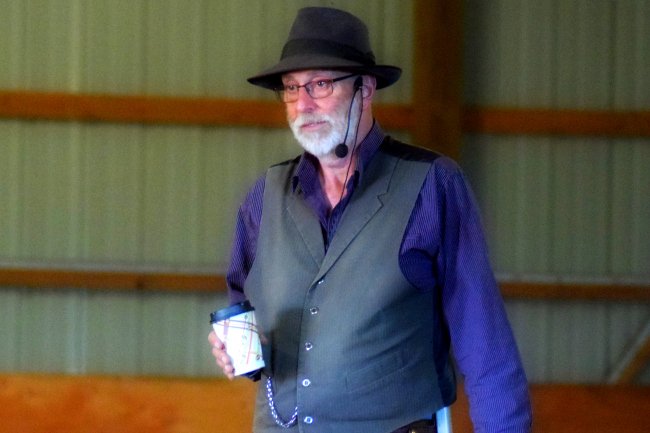There seems to be widespread confusion between the principles that training methods are founded upon and the application of those principles. I have noticed over several years that both professional and amateur horse people confuse principles and methods a lot.
For example, a horseman recently wrote on his FB page that a person should never use tarpaulins or flags when training a horse. He says, “… Every day, all over the world, horses are chased and harassed with tarps and flags.” He’s right. That does happen every day to some horses. He has also stated categorically that round yards should never be used in training, only square or rectangular yards because round yards encourage a horse to run. It’s true. Some horses do run in round yards. But he confuses what some people do with “that’s what all people do with flags and in round yards”.
Another trainer has written that natural Horsemanship (whatever that is – he doesn’t define it) is only good for teaching ground manners to horses and not for educating horses under saddle. Again, there is confusion between what some people ride like who practice natural horsemanship and what all people ride like who practice natural horsemanship.
In my regular perusal of the internet to keep up with what is being taught and advocated in the horse world, I see blanket statements like these all the time.
I understand where they come from. They come from a lack of understanding and bigotry.
Why misunderstanding? Because they see or hear about somebody, for example, chasing a horse in a round yard and instantly dismiss round yards and people that use them as anti-good horsemanship. They don’t bother to look deeper into the use of the round yard. They got the information they wanted and therefore they are not interested in examining the ways a round yard is used by other people in other ways.
Why bigotry? I say bigotry because when a person sees a method that they don’t use, being applied badly, it reaffirms and justifies their non-use of that method. It makes a person feel better about their own horsemanship when somebody else stuffs up. Gore Vidal once said, “Whenever a friend succeeds, a little something in me dies.” Well in the horse world the reverse is also true, “Whenever another trainer fails, I feel better about myself.” This form of self-induced ego inflation creates bigotry and bias that causes people to look for the bad in another’s training methods (which is different from critical analysis of other methods). So people who see bad results from horses trained with flags or whips, or in round yards or square yards, or with bits or without bits, or with hobbles or without hobbles, or using natural or traditional or classical horsemanship, want to make blanket labels that allow no room for a conversation regarding the principle behind a method and the method itself.
For example, the fellow who stated categorically that flags should never be used in training happens to use whips a lot in his training. He also rides a lot with spurs. No doubt he has seen flags used poorly resulting in bad outcomes, but has he also not seen whips and spurs used inappropriately resulting in bad outcomes? I know I have. I tend not to use whips or spurs, yet I don’t condemn the use of all whips and spurs because I know they have a purpose and can be used to benefit a horse when applied well.
Every method and piece of equipment exists simply because it worked for somebody with some horse at some time. That does not mean to say I think that every method or piece of equipment is okay and justifiable. I choose the methods and the equipment I use based on how they fit into the set of principles I bring to my horsemanship.
If I can apply a method in a way that is consistent with my principles, then I have no problem with using it. For example, I like round yards, but I have worked many times in rectangular yards and achieved just as much and remained just as true to my philosophy and principles. I also like flags but have used whips many times and have always felt they were almost interchangeable in the way I use them. I have ridden with bits and without and have had as much success with one as the other. I don’t use Parelli’s 7 games in my normal training, but I have taught some Parelli fans to apply the games in a way that fits into my approach to horsemanship.
The point I am trying to make is that people confuse a person’s ability to apply a set of principles for training horses with the principles themselves. When they do that, they make judgments about the principles when they should be making judgments about the practitioner. When two people use the same method in their training, but one does a better job than the other, where does the fault lie – the principle or the practitioner? No doubt the trainer with the better feel and a better understanding of accommodating the emotions and thoughts of a horse would still do a better job whether they used a flag or a whip, a round yard or a square yard, a bit or no bit.
Here I am using coffee as a training and teaching aid. I find coffee is an invaluable asset in my teaching toolbox when used well. But of course, it takes great skill and experience to be able to use coffee in a way that benefits the horse and rider. You shouldn’t condemn coffee just because some trainers have not learned to incorporate it properly into their training principles.

